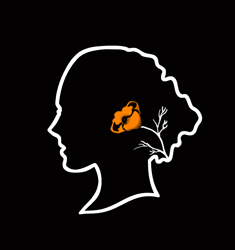Shuji Nakamura, Inventor
Where is the best place to live? That is the question renowned inventor Shuji Nakamura asked his colleagues when he decided to emigrate. Where you live determines who your children will grow up with, and what you have nearby access to in terms of culture, education, recreation, health care, and work. For Shuji, the draw to Santa Barbara included its world-class university and technological hub.
Shuji was born in Japan and attended the University of Tokushima. He is famous for his invention of the blue LED, to name just one of his 100 ideas. His inventions are changing the world through energy efficiency and energy cost savings.
He is open, humble, unassuming, and powerful in changing the world through his scientific contributions. When asked about his hobbies, he says, “I like to think.” The impact of his inventions has been compared with those of Thomas Edison. Surprisingly, he says he was a so-so student. One can imagine his kinetic mind at work and play, which seem to be the same for this brilliant professor.
A sense of Shuji’s serious play can be found in his technological art: a representation of a traditional Japanese fan, replete with his blue LEDs. You can see this “light saber” in action in Shuji’s video. In Holli’s portrait of Shuji, you might also notice the design details in the kimono, the representation of the GaN molecule, and note the warrior symbolism of the fan. Interestingly, at the turn of the century when electricity changed the way we lit the world, American art was strongly influenced by the Japanese aesthetic. In the portrait, the Japanese design underscores the rich heritage of the culture.
Becoming a scientist
“I read Atom Boy.” Shuji knew that he wanted to be a scientist from a young age, inspired in part by his favorite comic book character. In the comic book series, Atom Boy is depicted with flames streaming from his feet. It brings to mind Shuji’s meteoric rise in his scientific success.
After obtaining his master’s degree he worked at Nichia. “In my first job, I spent the first six months just reading the scientific literature; journal articles and papers. After six months the company told me, you need to make a product. I had my master’s when I invented the blue LED, I didn’t have a Ph.D.” Analogous to the work of a painter who mixes a full palette of color from the primary colors, red, blue, and yellow, Shuji explains the problem of developing energy efficient blue and green GaN based LEDs that create the best color rendering. The GaN-based LED development is revolutionary in terms of its possibilities for energy efficient lighting. In addition, his development of violet and blue laser diodes have revolutionized optical storage.
When asked about the working cultures of Japan and the U.S., Shuji reflects, “In the U.S. and Europe, there is an appreciation for scholarship. In Japan, the emphasis is on the product.” Shuji was raised in Japan, attended the local schools, and worked there for 20 years before deciding to emigrate. “Japan has a salaryman culture,” Shuji notes. Historically, company workers have been paid a salary-based income, without great compensation for individual achievement. Even after his famous invention of the blue LED, his status in the company was little changed. This is hard to believe – it would be similar to someone like Bill Gates not being recognized for his work.
With his famed inventions, Shuji was courted globally by top companies and universities. He could live anywhere in the world. In accepting the job of Professor of Materials at UC Santa Barbara, he joined a group of stellar colleagues. Together with his colleagues, Steve DenBaars and James Speck, he founded Soraa, a developer of solid-state lighting technology. With his colleague John Bowers, Director, Institute for Energy Efficiency, the university researchers are dedicated to the development of cutting-edge science and technologies that support an efficient and sustainable energy future. One humanitarian LED project is Professor Bowers' non-profit organization, "Unite to Light," which helps to bring low cost LED lighting to developing communities around the world.
Where is the best place to live? Like many of us who call Santa Barbara and the Central Coast our home, for Shuji, it has turned out to be his adopted hometown of Santa Barbara. From here, he continues to light the world with new inventions.
By Katherine Bradford


